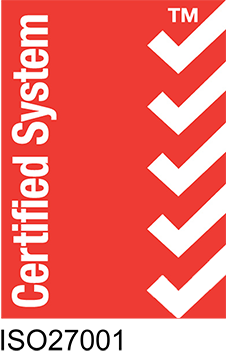The following is a general explanation of Web Statistics and can be used to gain a basic understanding of the statistics generated via Webalizer and AWstats packages that are deployed with the Plesk hosting control panel used by DDNS. The information provided as a general guide only.
Hits
This is the smallest measurable unit of action in the world of web statistics. It’s also the most overrated and confused, and actually can be ignored.
A hit is any request by a web browser (the software used to see websites) for any piece of your website. For example, if your home page has 5 graphics on it, plus 3 other extra files, anyone visiting your home page would cause 9 hits to be catalogued (one for the page itself, and another 8 for all the assets and pieces of that page).
So a website with many graphics on any page could register thousands of ‘hits’ a day, while the same website redone with just a handful of graphics might show a lower ‘hit rate’.
In short, ignore this – there’s no value to you.
Files
The next step up from a hit is a call for a file. Most of the time this is one and the same (a request for a file, like a photo, or logo, or an acrobat document) causes both a hit request and a file request to be logged. Sometimes, a hit is for a non-file item, so ‘hits’ is usually a larger value than ‘files’. But both are equally worthless in determining traffic patterns and usage, so again, feel free to ignore.
Pages (a.k.a. Page Views)
A page request (or page view) is a call to the server for a specific page on your website. Your home page is one page, your about us is another, and each of your product pages all count as separate pages. This is great information to know, because now you can see how many pages people are looking at over time. More importantly, most online traffic viewers will show popular pages (most requested) from highest to lowest number of requests. This tells you what sections of your website are most viewed, and what areas might need to be worked on (better content, more exposure in the menu or from other popular pages). By looking at page popularity, you can focus in on what works and what doesn’t for your visitors (they vote with every visit!). From there, you can improve (or drop) the underperformers, and increase your return on investment.
Entry / Exit Pages
Now that we know what a page is, and can see the top visited pages, another area to look at is entry and exit pages. If you had an actual physical building that represented your business, this would be similar to the first (and last) product someone looked at when they arrived (and left) your store. Popular entry pages are good to know, since you can tailor your message, specials or other content for the people just arriving to your website. While exit pages can be reviewed for bad performance, or as the end journey on typical visits, your special offer can be also reiterated on popular exit pages (one last chance before they leave to get them to take action on your website).
Visitors (Unique and Repeat), (a.k.a. Sites)
Every web browser that visits your website comes with a unique identifier, known as an IP address. We’ll skip the complexities of what that means, but they look something like this:192.168.34.5 (four sets of three numbers from 0 to 256).
Some visitors have static IP addresses (they remain the same across all visits), while others are assigned IP addresses from a pool that their service provider has when that visitor logs into the internet. So the same visitor could visit your site 5 times in a week, and each time would look like a different person, since their IP address is probably different. Conversely, people browsing from their office probably all share a common IP address (their connection to the internet, or site), so they all look like the same visitor to you.
But that’s OK – you’re looking for trends, not pinpoint accuracy. We want to see that the overall visitor count is rising over time, and hopefully that corresponds with an increase in revenues from your website.
Referring sites are those that send you traffic. Most of the time, it’s your own website (when someone clicks from one page to another within your site). The rest are from other sites that have your website link as part of their pages, usually a search engine, a website you traded a link with or one that linked to you because they liked your content or a specific page.
Links from other *quality* sites (especially the search engines) are quite valuable and great for traffic, since they’re a recommendation or ‘personal referral’ from the website they came from. And search engine traffic is always appreciated.
Search Strings
When a web visitor uses a search engine (like Google or Yahoo) to find your website, they type in a phrase (‘great web sites’) that reflects what they are looking for. If the search engine matches a page in your website to the entered phrase, you would show up on the search engine results page. If the visitor then clicks on that link and ends up on your website, the traffic reporter will show that visit as coming from the search engine (the referrer) and the Search String will be the phrase they typed to find you.
This is very valuable information to know, since it shows you a few different things:
• What are people using to find you (which might be very different from how you view your own website content).
• How search engines have indexed your website.
You might be surprised at what search strings appear in your results, since you might not have optimized for those terms in your content. Or conversely, content you did optimize for does not show up, since people are not using the phrases you think would work. And search engines only index on the content they can see, so if you want to be found under a given search string, but never mention that string in your content, keep dreaming!
Browsers, and Operating Systems (a.k.a User Agents)
What browsers (Mozilla Firefox, Microsoft Internet Explorer / Edge, Opera, Google Chrome) people are using to view your website, and what operating system they have installed (Windows, Mac, Linux). Check to make sure your website looks great in the more popular browsers as these will change over time as new and better browsers are released. Your site may have looked great in Internet Explorer but may look awful in the latest browsers e.g. Google Chrome.
Also, here is where you can see which search engine spiders (the software agents that visit your website and index your content) are visiting, and how often.


